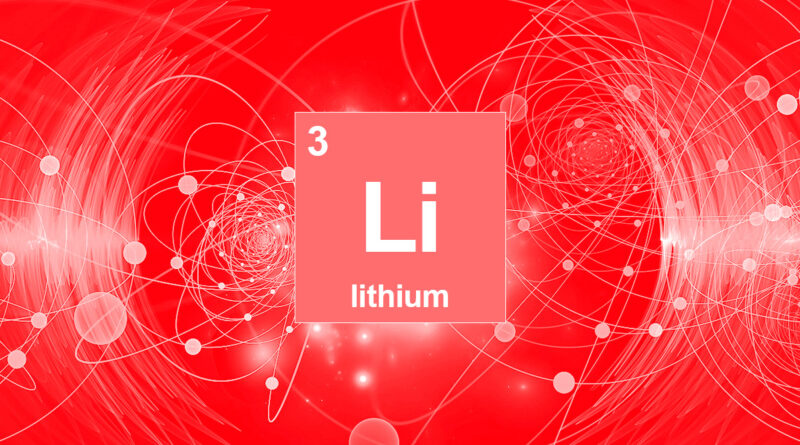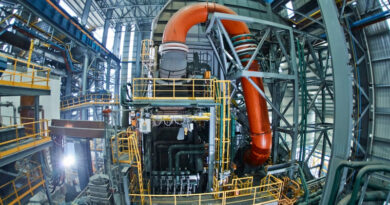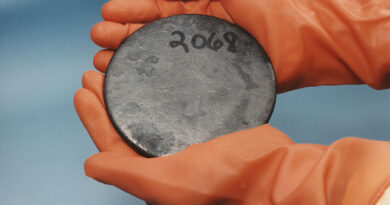GREEN METALS: Clayton Valley Lithium Project, Nevada
Cypress owns 100% of the Clayton Valley Lithium Project totalling 5,430 acres in southwest Nevada, USA. The Clayton Valley Project is located immediately east of Albemarle’s Silver Peak mine, North America’s only lithium brine operation, which has been in continuous operation since 1966.
Exploration and development by Cypress lead to the discovery of a world-class resource of lithium-bearing claystone adjacent to the brine field to the east and south of Angel Island, an outcrop of Paleozoic carbonates protruding up through the lakebed sediments. The Company is working towards a Feasibility Study and permitting of a mine and metallurgical facility for its large deposit of lithium-bearing claystone.
Lithium mineralization occurs within montmorillonite clays throughout the sediments to a depth of at least 150 meters. Metallurgical testing indicates low cost processing can be achieved by leaching with low acid consumption (126 kg/t) and high lithium recovery over 85% Li. These high extractions prove the dominant lithium-bearing minerals present are not hectorite, a refractory clay mineral which requires roasting and/or high acid consumption to liberate the lithium.
LOW COST OPPORTUNITY
The key features of the Clayton Valley Project include the large flat-lying nature of the lithium claystone deposit. These features allow mining with a low strip ratio (0.29:1) due to minimal overburden and no interbedded waste. Surface mining will require no drilling or blasting in excavation. Metallurgical testing indicates low-cost processing can be achieved by leaching with low acid consumption (126 kg/t) and high lithium recovery over 85%. Self-generated power from a 2,500 tpd sulfuric acid plant is included in the project’s Prefeasibility Study costs.
In March 2021, Cypress announced the development of a lithium extraction pilot plant at del Sol Refining & extraction facility, south of Beatty, Nevada. The operation of the pilot plant will provide essential data for a planned Feasibility Study and enable Cypress to produce marketing samples to support negotiations with potential offtake and strategic partners.
The Company will be using a chloride-based approach for the initial configuration of the pilot plant. Results from an internal scoping study demonstrated several benefits utilizing chloride-based leaching to liberate the lithium from the claystone in the areas of economy, process, and the environment. A sulfate-based approach, as detailed in the project’s August 2020 Prefeasibility Study below, remains a viable alternative.
POSITIVE PREFEASIBILITY STUDY
A positive Prefeasibility Study (PFS) for the Company’s Clayton Valley Lithium Project in Nevada was prepared by Continental Metallurgical Services (CMS) and Global Resource Engineering (GRE). Todd Fayram, MMSA-QP (CMS), Terre Lane, MMSA-QP (GRE) and J.J. Brown, SME-RM (GRE). The Report has an Effective Date of August 5, 2020 and was amended March 15, 2021.
Results for the PFS are:
- Average annual production of 27,400 tonnes per year LCE
- Mine life for PFS of +40 years
- Lithium Carbonate price of $9,500 per tonne
- Industry-low cash cost of US$3,387 per tonne LCE
- US$1.03 billion NPV at 8% discount rate, after-tax basis
- After-tax internal rate of return (IRR) of 25.8%
- Capex payback period of 4.4 years
PRODUCTION PLAN
Mining and processing are based on a daily rate of 15,000 tpd of mill feed. Material will be mined by a track excavator and transported using semi-mobile feeder-breaker and conveyors. The stripping ratio is 0.29:1.
Lithium in the deposit is associated with illite and smectite clays. The lithium is amenable to leaching with dilute sulfuric acid leach followed by filtration, solution purification, concentration, and electrolysis to produce high-purity lithium.
Metallurgical work by Continental Metallurgical Services (CMS) determined optimum conditions for leaching including time, acid concentration, and temperature. Tests show only minor differences occur with respect to sample depth, oxidation, or weathering state of the clays.
Large leach tests were performed on samples to provide slurry for rheology, filtration, and lithium recovery testing. The tests yielded average results of 86.5% extraction of lithium into solution and 126.5 kg/tonne for acid consumption.
NORAM Engineering & Constructors Ltd. and CMS designed and tested the flowsheet for recovering the lithium from solution. Testing was completed in March 2020 and report received in May 2020. The NORAM-CMS test program was successful in yielding a purified concentrated lithium solution suitable for the production of high-purity lithium hydroxide (LiOH).
CAPITAL AND OPERATING COSTS
Capital and operating costs were estimated from vendor quotes, internal data and public information. The initial capital costs are estimated at US$493 million, including US$95 million in contingency (at 20%) plus working capital. Operating costs are estimated to average US$16.90/tonne, or $3,387/tonne LCE.
Acid plant operations are a major component in the operating costs and account for one third of the total operating cost based on a delivered cost of US$145 per tonne for sulfur. The acid plant has capacity to generate 93% of the power required by the operation and will have surplus power available when the operation is running. No allowances are made in the operating cost estimates for potential power sales or offsets.
The project has the potential to recover other by-products in addition to lithium including rare earth elements, most notably scandium, neodymium and dysprosium, that were identified in solution, and alkali salts. No values are given in the PFS for any by-product elements as these are still conceptual in nature.




